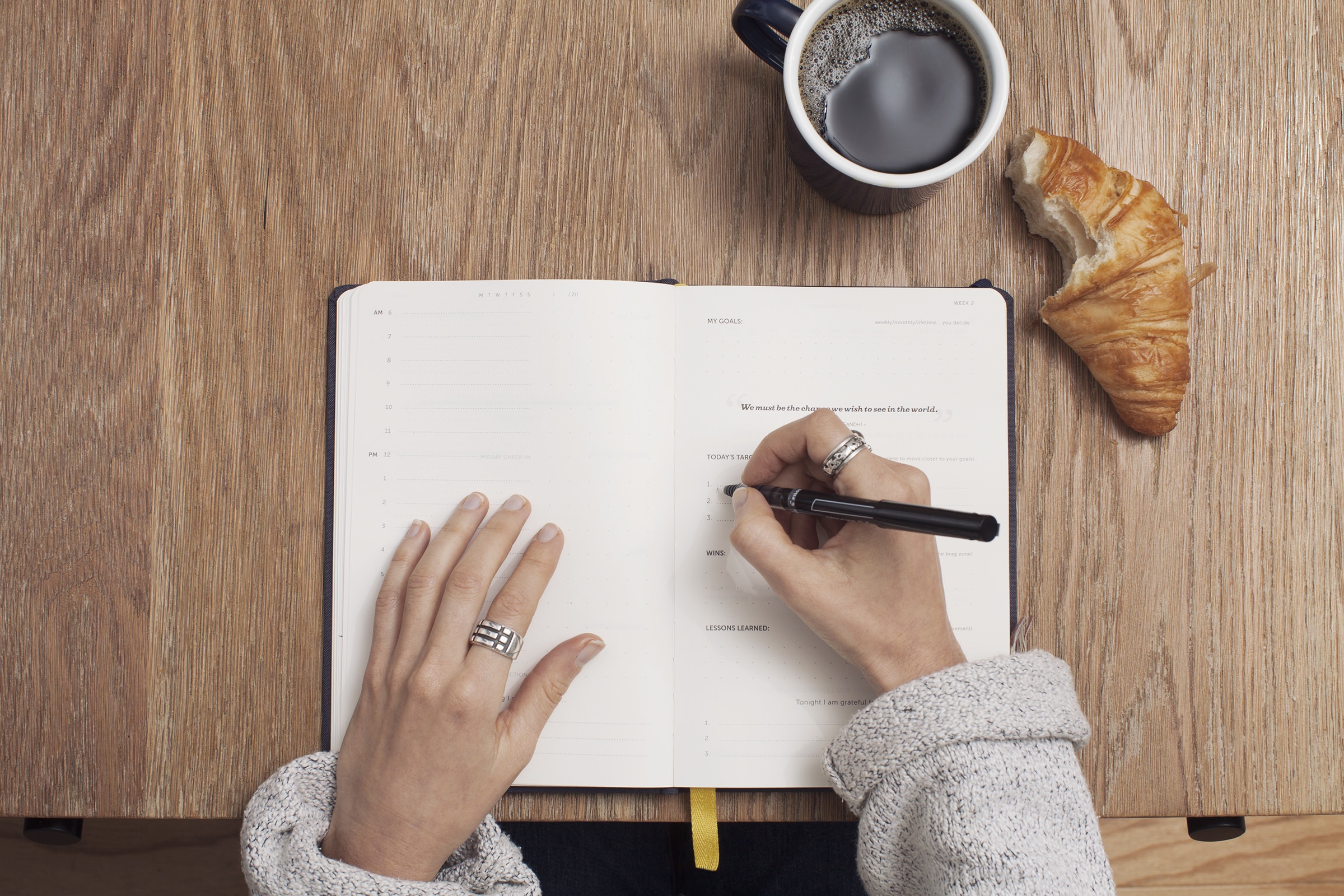Stop Trying to ‘Crush’ Fear and Learn How to Thrive In It
I cried the first day I quit my job and decided to run a blog full time. I had a safe job. I had been recently promoted. But I wanted more.
I’m scared because I write.
I’m scared because I’ve chosen a path where I share publicly.
I’m scared because recently people started listening.
I’m scared because I always thought that it would be awesome, but I fear that I will let you down.
I’m scared that I may fail and be poor and homeless.
I’m scared that you all will hate my next article and never read anything I write again.
I’m scared that I will not be able to provide for my family.
Fear gets its power from our not looking at either the fear or what we are afraid of.
However, it seems that whatever we most fear — be it love or truth or even death — we all have this choice, again and again: either to look directly at the fear or to hide from it and pretend it does not exist.
What choice will you make?
Fear is the ultimate handicap for the human race. It levels the playing field. We all, unless you are an alien, deal with massive fear in our life from time to time.
Our brain still is on the lookout for tigers in the jungle. Fear is hardwired into our DNA. Although our conditions have changed, our brains have not completely caught up, and so we are left with similar feelings of panic to the man in the jungle when we are about to give a presentation or about to ask that girl at the bar out for drinks.
The problem is not that the fear exists, as fear is the reason you and I are still alive today. The problem is that more often than not fear controls your decisions.

Fear or Growth

For more advice on thriving with fear, sign up for free, daily messages from Shine.
Entrepreneur James Altucher has written about how we as humans only have two decisions: (1) fear decisions or (2) growth decisions:
"It’s ok to feel fear. It’s ok to wake up at 3 in the morning and pace the room thinking you’re about to do something scary that will fail.
But don’t make decisions then. Schedule a time, let’s say 3 in the afternoon, where you will return to this decision. Say to yourself, it’s 3 in the morning, and I know I feel a lot of fear at this time, so I’m going to sleep and address this at 3 in the afternoon.
At 3 in the afternoon, you are much more likely to make a growth decision."
I used to be crippled by fear. I was scared of flying, driving, and even walking to class during my intense battle with anxiety. It seemed like every decision I made was to hide from fear and avoid panic-inducing situations.
But, after I started getting into mindfulness and working with my fears and emotions, I began to observe my fears and not allow them to control my decisions.
To be clear, I felt the same fear I always had, but instead of hiding from it, I started, ever so slightly, to look fear directly in the face, feel it and continue.
I still struggle with fear on a daily basis, but I have developed some tools that help me work more mindfully with this ancient human emotion, which has led to increased peace and far less anxiety.
1. Stop Trying to Crush Fear and Accept It

There is a growing notion in the self-help world that fear is something that you can crush or live without if you just hustle hard enough. That strategy may work for some, but not for me.
When I tried to white-knuckle my way out of fear, I miserably failed. Not only did I fail, but I made it worse.
However, as soon as I began to feel my fear completely and accept it for what it was, it immediately began to dissolve, because I saw it for what it was: illusory.
The next time you are feeling fear, stop and notice where in your body it is coming up.
In your throat? In your stomach? Notice it and just observe it. Do not tell yourself a story of why it is there, just watch its physical symptoms.
Being aware of your thoughts, emotions, and sensations and choosing to observe them, instead of assigning meaning to them, is the basis of mindfulness. It can help you restructure negative thoughts and emotions in a light that is much more beneficial.
2. Lean Into Fear
Fear, like all emotions and thoughts, will eventually fade away if you are willing to sit with it and not react to it.
For me, I have started to notice that whenever I am afraid of something it usually is my body/mind telling me, “Hey, that thing you fear the most. Yeah, that thing. That is where the magic happens. Lean into it.”
We tend to fear the very things in life that we need to do to become the person we were meant to be.
Next time fear comes up, feel it, and then ever so slightly begin to lean into it. If you are like me, you will often find that the thing you feared the most was nothing more than an excuse keeping you from doing the hard thing.
3. Fool Yourself

A great mind hack that I learned from Tony Robbins is the art of tricking your mind into believing that fear is excitement. Both emotions have the same physical responses in the body. As Richard Feynman said, “the first principle is to not fool yourself, and you are the easiest person to fool.”
Now whenever I have fear of flying or speaking or writing a new piece, I simply say to myself, “you are excited” and get back to what I was doing. It took a little while for the practice to make a difference, but each time I mindfully attach a positive emotion to the physical feeling of fear, my brain is rewired to automatically think that.
Fear is a powerful emotion, so instead of running from it, channel it by assigning it a positive meaning to reap the benefits.
4. 40 Percent More

Jesse Itzler, in his book Living with a Seal, tells a story about the first day he was being trained by his own personal Navy Seal that speaks volumes to the human potential.
He said: “Seal always told me, right when you think you can’t do anything more, you can do 40 percent more.”
So if you are doing push-ups, for instance, and you do 100 and think you are going to collapse in exhaustion, it probably means you can do another 40.
Have faith that you have more strength than you think and keeping pushing.
5. Negative Visualization
One tool that has been very helpful to me in making big decisions that I was worried about is negative visualization. It's a practice developed by the Stoics to visualize the worst case scenario of a single decision. It helps me see that the worst case scenario is often not as bad as it seems.
The practice is to draw three columns on a piece of paper. In the first, you put all of the possible worst case outcomes you can think of. If you fear it, write it down. In the second column, you write all of the ways that you can prevent the worst case from happening. Then, in the third column, you assume that the worst case has occurred and you write down all of the ways in which you could get back to the place you are at today.
By doing this fear trapping, you can clearly see that most of the things we fear are not that debilitating and there are many things that we can do to prevent them from happening.
6. Do one thing a day that scares you

Although this may seem a bit cliché, it is a daily practice that has tremendously helped me work more efficiently with my fear. I am not saying that you should tackle one huge fear each day, but instead, pick something super small that gives you the slightest bit of anxiety and fear.
My daily practices have included sending an email to someone I respect and hosting an Instagram live video.
They don't need to be life-altering actions, but the mere act of doing something small that you fear every day strengthens your mind. Think of each of these activities as daily workouts for your brain.
Pick one thing that brings you a little stress or fear and commit to doing it today.
7. Believe in yourself
Even as I write this, it seems dumb, but for me, belief has been a lever that has catapulted me into a life that I love.
When you have a steadfast belief in your ability and confidence that you will be able to handle any situation, your fear will melt away. I am not saying that you will become Superman or Wonder Woman, able to fight any battle. But I do believe that you are far more capable than you think.
I have personally experienced massive growth through belief.
The belief that fear is a signpost pointing me in the direction I am supposed to take.
The belief that everything great is on the other side of fear.
The belief that nothing in life worth doing comes devoid of fear.
The belief that I have far more ability to get through whatever comes my way than I give myself credit for.
In the middle of uncertainty, shed your light on any path that suddenly shows up that might be available to you.
8. Discerning Wisdom

Most of the outcomes we fear in life, death, illness, etc., we cannot control.
However, what we can control are ourselves and our actions. And that is where we should put all of our thought and action. Not in the future that we have no ability to control, but rather on the things that we do every day.
Have the wisdom to know what you can control and what you cannot.
Choose to focus on the former, because it is the only thing that will prepare you for when the latter comes.
9. Be the Buffalo
A Buffalo is an excellent metaphor for learning how to live with fear.
When a storm is approaching the herd, instead of running away from the storm, buffaloes run straight into the heart of it to get through it as quickly as possible.
Fear, like all emotions, will always be part of the human condition, but you do not have to give it the authority to control your life. It does not have the power to control your decisions unless you give it that power. As Elizabeth Gilbert says in her new book Big Magic:
"You’re allowed to have a seat, and you’re allowed to have a voice. But you are not allowed to have a vote. You’re not allowed to touch the road maps or suggest detours. You’re not allowed to fiddle with the temperature. Dude, you’re not even allowed to touch the radio. But above all else, you are forbidden to drive.
Be willing to accept that fear will always be along for the driver, but have the wisdom not to let it control your decision, and channel it for your growth."
Read next: 3 Tricks to Help You Get In the Productivity Zone'
Shine is supported by members like you. When you buy through links on our site, we may earn an affiliate commission. See our affiliate disclosure for more info.


